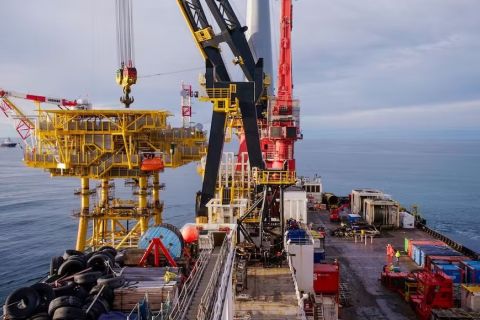By Steve Shafer, Chief Investment Officer, Covenant Investors When China goes shopping, the ripple effect can be so enormous that cash registers around the world go “ca-ching.” In the case of natural gas, I expect that U.S.-based companies Chesapeake Energy Corp. (NYSE: CHK), Devon Energy Corp. (NYSE: DVN) and SandRidge Energy Inc. (NYSE: SD) will be the indirect beneficiaries of China’s energy shopping spree. Here’s why. Currently, about half of China’s imported natural gas is delivered by pipeline from central Asia and the other half in the form of liquefied natural gas or LNG. China is expected to be one of the big buyers of cheaper LNG from Canada when its new LNG export terminal is completed in British Columbia in 2015. If that happens, China could siphon off a significant source of natural gas that Canada normally exports to the U.S., thus driving up domestic natural gas prices that have been depressed by excess supplies in the market. Why would Canada prefer to ship LNG to China over simply piping it to the U.S.? Simple. LNG fetches roughly twice as much in Asia and Europe than the current $4.35 per million Btu (MMBtu) it goes for here in the U.S. In 2009, it bears noting, Canada provided 87% of all U.S. natural gas imports, representing 12% of U.S. consumption. If current figures are any indication, China’s demand for cleaner-burning fuel will have an impact for years to come. FACTS Global Energy predicts that China will import 13 million metric tons (mt) of LNG by year’s end 2011, up from 9.3 million mt in 2010 and will overtake No. 2 importer South Korea before the end of the decade. We just got a preview of this scenario this summer. China’s imports of LNG soared to a record 1.04 million mt in June as its utilities’ geared up to meet increased summer demand. Added to this equation was the unexpected demand for LNG from Japan as it scrambled to make up for the loss of the nuclear power capacity since the March tsunami. Imports by Japan rose 10.6% year-on-year in June, marking a third consecutive month of increases as utilities stepped up imports. Like China, Japan’s taste for LNG seems likely to remain strong because fears about the safety of nuclear power plants there has kept some reactors offline and created opposition to building more. It’s all part of one of the most remarkable, biggest reversals in energy history. Only a few years ago, the U.S. thought it was facing a shortage of natural gas and built ship terminals to import it. But a sudden and dramatic boom in natural gas drilling took off in 2005, creating a huge glut in the market. Now, there’s a move to convert the import facilities into export terminals. That strategy faces opposition not only from environmentalists but also some politicians who favor preserving our energy resources for Americans. The bottom line is exporting LNG from the U.S. will take years, and in the meantime, competition for supplies by China and now, Japan, will divert Canadian natural gas supplies to Asia. Obviously, this bullish scenario is going to play out over years, not months. But any sustainable upward trend in prices will greatly benefit the U.S. natural gas industry. In fact, prices have firmed up this year, but the significant increases that I see will be a few years in the future.
Recommended Reading
E&P Highlights: April 1, 2024
2024-04-01 - Here’s a roundup of the latest E&P headlines, including new contract awards.
E&P Highlights: April 15, 2024
2024-04-15 - Here’s a roundup of the latest E&P headlines, including an ultra-deepwater discovery and new contract awards.
Deepwater Roundup 2024: Offshore Australasia, Surrounding Areas
2024-04-09 - Projects in Australia and Asia are progressing in part two of Hart Energy's 2024 Deepwater Roundup. Deepwater projects in Vietnam and Australia look to yield high reserves, while a project offshore Malaysia looks to will be developed by an solar panel powered FPSO.
Deepwater Roundup 2024: Offshore Europe, Middle East
2024-04-16 - Part three of Hart Energy’s 2024 Deepwater Roundup takes a look at Europe and the Middle East. Aphrodite, Cyprus’ first offshore project looks to come online in 2027 and Phase 2 of TPAO-operated Sakarya Field looks to come onstream the following year.
TotalEnergies Fénix Platform Installed Offshore Argentina
2024-02-13 - First gas from the TotalEnergies-operated project is expected in fourth-quarter 2024.





